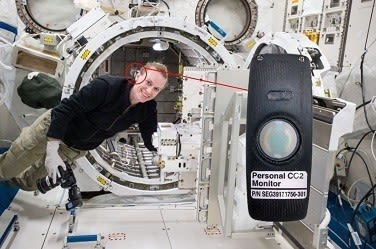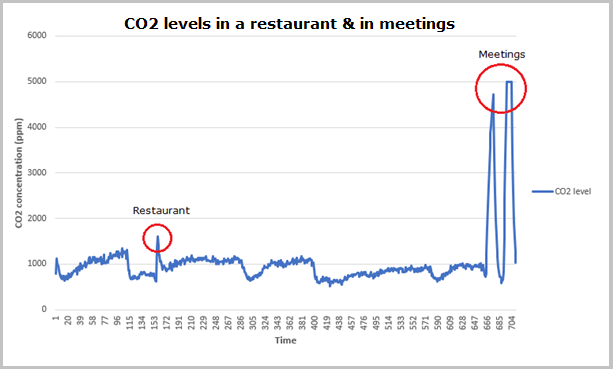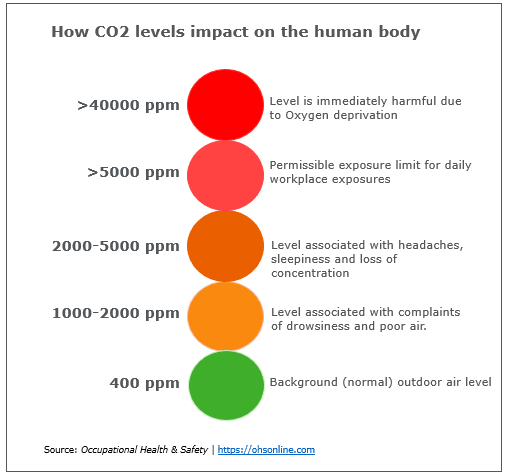Every breath you take, I’ll be watching for you
Follow articleHow do you feel about this article? Help us to provide better content for you.
Thank you! Your feedback has been received.
There was a problem submitting your feedback, please try again later.
What do you think of this article?
Climate change has made people aware of carbon dioxide (CO2) over the past couple of decades with the major source being the burning of fossil fuels. However, there is another major source that people forget. Seven billion people, whose every exhalation is rich in CO2. As you can’t see it or smell it, carbon dioxide goes unnoticed most of the time, until it builds up to a level where people start yawning and losing concentration.
Here at Gas Sensing Solutions, creating new ways to monitor CO2 has been our passion for over ten years. By inventing a radically new way to measure CO2 levels with our specially developed LEDs, we have created a new class of CO2 sensors that are rugged and small, but most importantly use so little power that they can be powered by batteries for long periods of up to ten years. This is a real breakthrough as other designs on the market need so much power that they have to be plugged in, in order to operate.
GSS has been selling CO2 monitors around the world for many years. As a result, they have been built into all kinds of industrial equipment - from laboratory incubators to breweries. Recently, we have noticed a new trend of monitoring ambient levels of CO2 in offices, schools and homes, driven by research that shows that it does not take much of an increase in CO2 levels to have an adverse effect. To be specific, a CO2 level of around 400ppm is considered a typical level out in the open air. At only 1000ppm, the air will start to feel stuffy which people mistakenly think is due to lack of oxygen rather than CO2 build up. As more research is done on this, maximum levels for CO2 in work environments and schools are being recommenced, with legislation being put into place in many countries.
To really find out how quickly CO2 levels can rise in a confined space, we decided to do some real-world experiments. As mentioned previously, our sensors can be battery powered as opposed to mains operated, so we designed a hand-held data-logger using one of our CozIR®-A sensors that measure CO2 levels, temperature and humidity. We took it to a variety of environments to see what levels of CO2 people were being exposed to in everyday life.
On a train journey, a large party of school children and teachers entered our carriage taking the CO2 from around 700 ppm to over 4000 ppm in under 20 minutes.
In the private dining room of a restaurant with 15 guests, it took just 30 minutes for the reading to go from 700ppm to 1600ppm. Our next venue to check was an office in a high-rise building. In this small room, the four attendees rapidly took the CO2 level from 700ppm to 4700 in the first meeting and to 5001ppm the second meeting. In the latter case, within a period of only 30 minutes - halfway into a typical hour-long meeting. Everyone was affected by seriously high levels of CO2. With noticeable effects on concentration and people feeling sleepy.
As you can see from our real-world readings, CO2 levels can rapidly rise to levels that can affect people surprisingly easily. Fortunately, our sensors make it surprisingly easy to monitor these levels in ventilation systems so that every breath you take does not have levels above the generally accepted maximum level for comfort of around 1000ppm.
Using our sensors is easy and straightforward especially as we have evaluation kits that enable you to be up and testing proof of concept very quickly. We have a comprehensive range of CO2 sensors available off the shelf to suit most applications from low-level concentrations right up to 100% CO2. For our customers who are looking for something a little more bespoke, we can create a custom solution to specifically meet the needs of an application, as we make and manufacture all our sensors in-house.
For more information about Gas Sensing Solutions, and the carbon dioxide sensors we manufacture, check out our website here.
[i] http://www.energy.wsu.edu/Documents/CO2inbuildings.pdf
[ii] https://www.climate.gov/news-features/understanding-climate/climate-change-atmospheric-carbon-dioxide






